Many of us have them. The invisible “graveyard” where good intentions (AKA – corrective actions from your root cause analysis investigation) went to die.

We all know that all the time and money spent on a root cause analysis investigation and identifying solutions is worthless if the solutions are not implemented. An investigation can usually be done within a week but solutions can take much longer to implement. They sometimes require the involvement of multiple teams or departments, regulatory agencies, engineering, planning, budgeting, and the list goes on and on. For these reasons, it can be challenging to stay on top of all the corrective actions you identified in your investigation, who’s responsible, and the status of an action item at any given time.
We can offer a few basic tips that will give you a head start in tracking action items effectively:
- Be clear about who is responsible for each corrective action. You don’t want to create the opportunity for people to be able to pass the buck with “I thought Bob was going to do it”.
- Have a mechanism in place by which the implementation of corrective actions can be tracked.
- Give ownership of a solution to an individual, not a group or department.
- Assign a due-date for each corrective action.
- Support people in their efforts to implement corrective actions.
- Make sure you follow up on each corrective action – check back with the individual responsible to make sure that progress is being made.
But even these “basics” are easier said than done.
In reality, most likely you come out of your root cause analysis investigation with a list of action items for which various people are responsible. Then everyone goes about their regular workdays and may or may not remember to follow through on any additional tasks they were assigned. Even if you have an appointed person to follow up with the action items and make sure they’re on track, it can be difficult to keep up with who has done what. Many managers rely on an Excel spreadsheet to manually track what has and hasn’t been done, due dates, and so forth. But this puts a lot of pressure on one person to keep up with everything – to manually send reminders to folks who haven’t completed their tasks and to enter the information properly when it has been done.
Even when the Excel file has been carefully kept up-to-date, it often lives locally on the manager’s hard drive, and other members of the team don’t have any visibility as to what has and hasn’t been done.
Sound familiar?
If your RCA program is starting to mature it may be time to consider an enterprise solution to help you better manage all your investigations.
Corrective action tracking inside of an enterprise RCA tool can help you maintain visibility and accountability by tracking the status of action items and assigned solutions. Team members get sent automatic reminders of incomplete or overdue action items and they can easily update the status of their assigned tasks, instantly informing everyone when a task has been completed. You can also create personalized dashboards with reports showing open, completed, or overdue corrective actions.
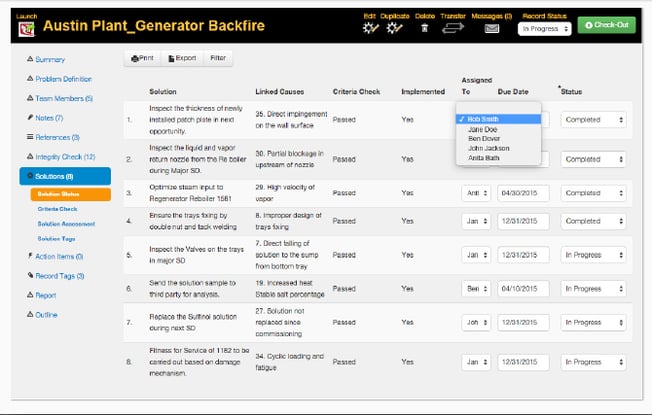
In addition to effective action tracking, an enterprise RCA solution can more broadly help your company implement and manage an effective overall root cause analysis program.
Here are some of the main features to look for:
Enterprise-wide visibility of your RCA programExpand the RCA knowledge base and accessibility across an organization.
Leverage information from previous investigations in your current investigation.
Classify and tag files for easy search-ability. Create custom tags incorporating company or industry standards.
Create and share interactive KPI reports
Build reports on your chosen metrics and visually display key performance indicators in tables, charts and graphics.
Specify which reports are most important to you for immediate dashboard display on your home page.
Preserve integrity by securely collecting and storing evidence and important reference files.
Store company corporate standards or reference files such as frequently referenced industry documents in a central location for immediate access when facilitating an RCA.
Communicate with all users through on-page messaging that lets you quickly share information, receive feedback and record comments.
Remember, in order to resurrect your RCA investigation corrective actions, start with the basics that we listed at the beginning of this article. But also keep in mind – the more mature your RCA program becomes, or the larger and more complex your organization, the larger and more complex your problems become. So when you’re ready to alleviate this pain point altogether, consider whether an enterprise RCA solution might be the next step in your program’s development.



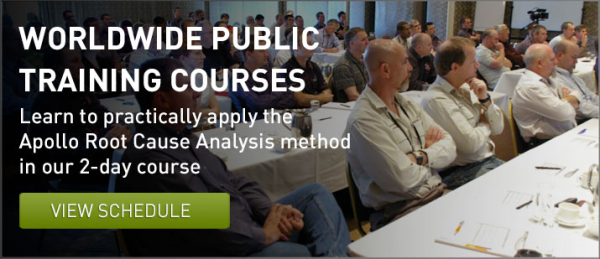



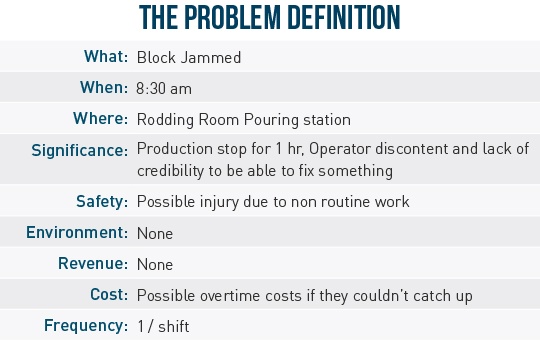

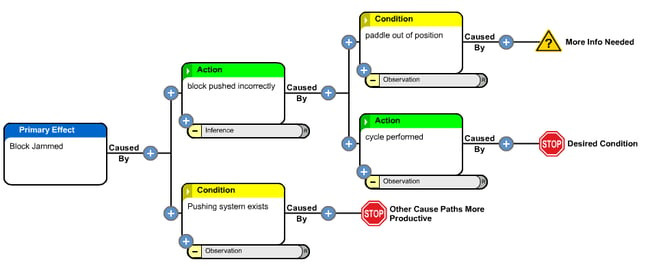 At this point I alerted everyone to the issue, and the maintenance personnel came over and safely moved the paddle back so the shift could finish. Our facility had a swing shift crew that worked in the area after the production was done, so they were assigned the task of fixing the unit.
At this point I alerted everyone to the issue, and the maintenance personnel came over and safely moved the paddle back so the shift could finish. Our facility had a swing shift crew that worked in the area after the production was done, so they were assigned the task of fixing the unit.
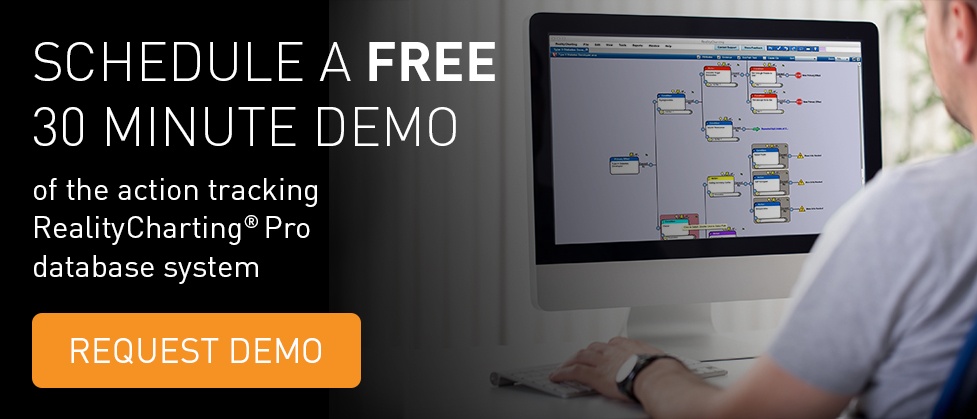

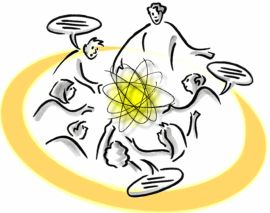
 stipulated a maximum of two hours for an RCA to be conducted in his organisation. Another expects at least “brainstormed” solutions before the conclusion of day one – within 6 or 7 hours. It is not uncommon for a draft report to be required within 48 hours of the RCA.
stipulated a maximum of two hours for an RCA to be conducted in his organisation. Another expects at least “brainstormed” solutions before the conclusion of day one – within 6 or 7 hours. It is not uncommon for a draft report to be required within 48 hours of the RCA.



